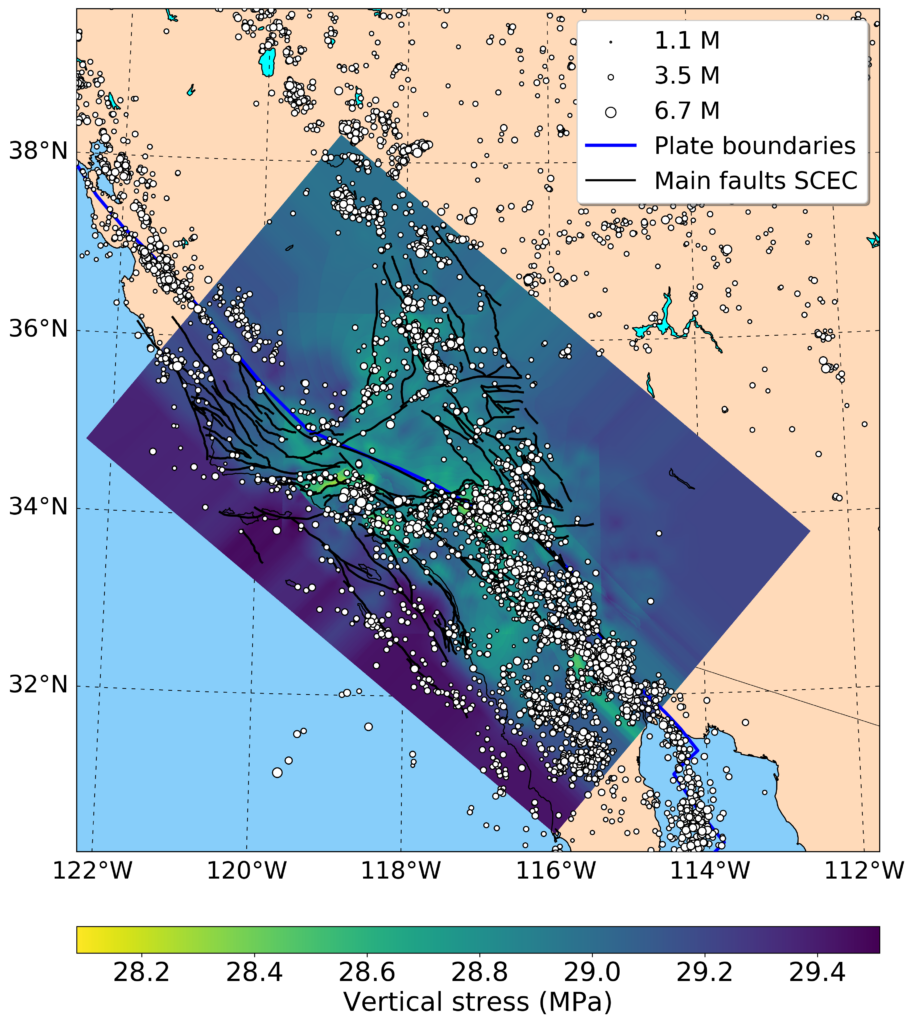Task 8: Application of the 4D Earth framework in hazard mapping
In this work package we plan to implement the 4D Earth frame work in regional study cases for hazard mapping and the sensitivity to this application.
We will focus on two specific regions: the North Anatolian Fault (WP 8100, WP 8200 and WP 8300) and the San Andreas Fault (8400).

Understanding the relative importance of the loads acting on the lithosphere and how the stress is distributed throughout the crust and lithospheric mantle is of relevance for seismic hazard assessment. As the stress transferred to a fault affects its mechanical behavior (e.g., Humphreys and Coblentz, 2007), it has a direct control on its potential to generate earthquakes.
The wealth of high-quality geophysical data in Southern California provides a great opportunity to explore how regional variations in the depth distribution of earthquake hypocenters are modulated by a heterogeneous lithospheric configuration.
Workpackages Task 8
In this WP we will implement software links between finite rupture models and medium descriptions for 1D Green’s functions from the Pyrocko open-source package with SeisSol for easy interoperability. Results of geophysical earthquake source modeling with the open-source software Pyrocko can directly enter into rupture simulations which use SeisSol.
We will integrate fault and medium model for a rupture simulation at the North Anatolian Fault by realizing a segmented fault and the WINTERC regional 3D medium model for a realistic earthquake rupture simulation. To do so, we will form a higher-level interoperability with the SeisSol software by making the import of WINTERC 3D medium models to SeisSol possible and we test the functionality with a single-segment rupture.
We will compare the peak ground velocities and acceleration propagating in 3D heterogeneous medium to the values resulting from a simulation within a 1D layered medium to assess the significance of 3D medium structure for seismic hazard.
We will use the San Andreas fault system, in Southern California, to demonstrate the potential of detailed lithospheric-scale models in the understanding of the spatial distribution of background seismicity.